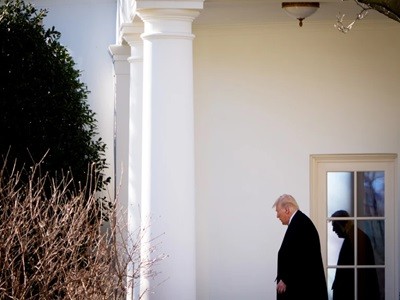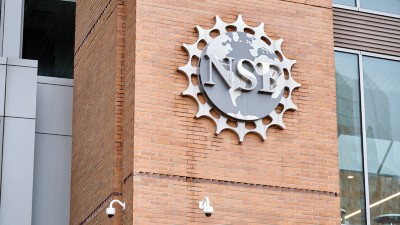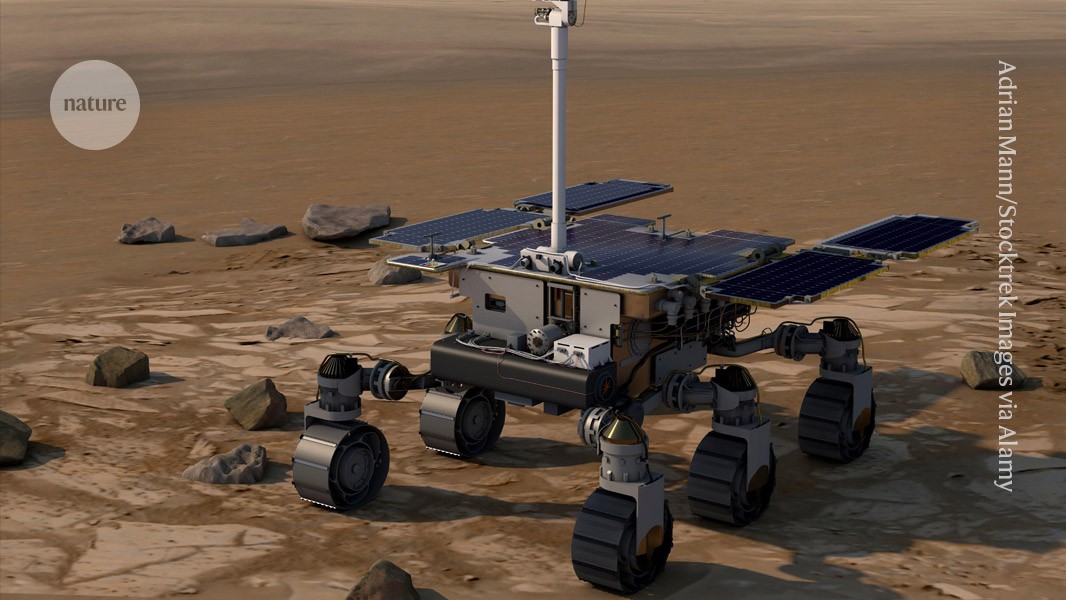The ExoMars mission’s Rosalind Franklin rover (artist’s impression) will carry a drill to search for signs of ancient life on Mars.Credit: Adrian Mann/Stocktrek Images via Alamy
Europe’s beleaguered ExoMars rover is one of several international collaborations whose future looks bleak owing to unprecedented cuts to US science funding proposed by US President Donald Trump’s administration.
Last year, NASA agreed to provide both launch and landing gear for ExoMars’s Rosalind Franklin rover after the European Space Agency (ESA) cut ties with its former partner, the Russian space agency Roscosmos, over Russia’s invasion of Ukraine. The rover is designed to hunt for ancient life on the red planet.

Trump proposes unprecedented budget cuts to US science
But Trump’s proposed budget for NASA for fiscal year 2026 — published on 30 May — would slash to zero the US contributions to ExoMars, as part of a cut of almost 50% to NASA’s science division, compared with 2024 levels.
Other ESA missions that could lose US contributions include ARIEL, a space telescope scheduled to launch in 2029 that is designed to study the atmosphere of exoplanets; LISA, a space-based gravitational-wave detector set to fly in 2035; and Envision, a spacecraft planned to head to Venus in the 2030s. The proposal would also cut all US funding to Euclid, an ESA probe already in space monitoring dark energy.
In a statement to Nature, ESA said that the agency is “in discussions with NASA” and “analysing the potential implications” of the budget proposals with its member states, which will discuss potential action and alternative scenarios at an ESA Council meeting on 11 and 12 June.
“We can only hope that these proposed budget cuts never come to pass,” says Leigh Fletcher, a planetary scientist at the University of Leicester, UK. “But either way, it may take time to recover from the erosion of trust between agencies after these proposals.”
Large cuts likely
Trump’s budget proposal is just a starting point for negotiations in the US Congress, which will ultimately decide how to allocate the federal budget.
In the past, a call to slash funding for science would have been robustly rejected, but “that is not true at the moment”, says Michael Lubell, a physicist who tracks science policy at the City University of New York. Although Congress might soften the cuts, they are still likely to be large, he says. The president’s strategy to put “America first” could play against international projects, Lubell adds.

Trump moves to slash NSF: why are the proposed budget cuts so big?
The budget also includes large cuts to the US National Science Foundation (NSF), including a 40% reduction for the Laser Interferometer Gravitational-Wave Observatory, which has sites in Louisiana and Washington state. NSF contributions to the international Atacama Large Millimeter/submillimeter Array telescope in Chile would be cut by 20%, and funds for the Large Hadron Collider, based at CERN, Europe’s particle-physics laboratory near Geneva, Switzerland, would fall by around 40%.





